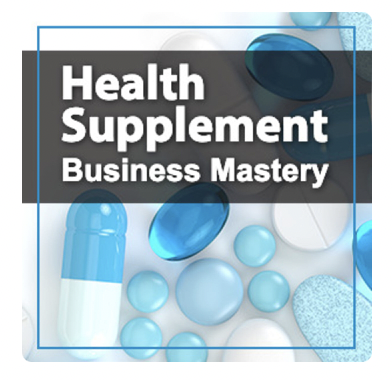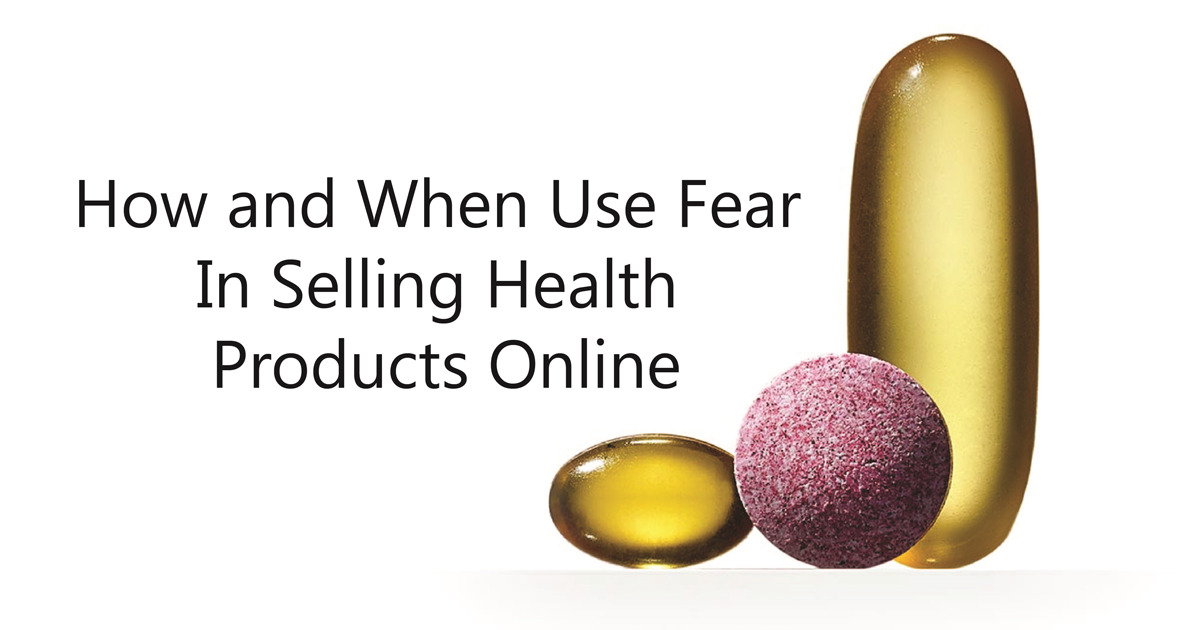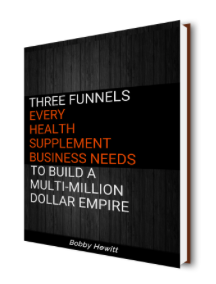All good direct response marketers know that people buy based on emotions. In fact, it’s more than just how we buy, it’s how people make any decision.
“Emotion is a powerful force, it’s what drives all action.”
~ Tony Robbins
Emotion is one of the biggest direct response marketing tools in any good copywriters pocket. Marketing health products online is no different. People buy based on emotion, then justify it with logic.
When selling something like a health supplement bottle, there’s not much to the desirability of the actual product itself. I mean who really wants a white plastic bottle they stick in their cabinet and hide away. What they want and what they are buying is the feeling they get from taking the dietary supplement itself.
Selling through emotion, taps into our inner hopes and desires. When a prospect considers buying a health product, such as a bottle of supplements or a digital health eBook, they don’t see your product as it is. It’s not a plastic bottle filled with little capsules to them. Instead they see your health product as they are, as a reflection of their inner hope and beliefs.
“To put it plainly, seeing is not believing – believing is seeing. We see things not as they are, but as we are.”
~ Napoleon Hill, Think and Grow Rich
The best way to connect to that feeling is through emotion and stories.
We are story driven beings.
Our brains are hard wired to think in stories.
And the most powerful story is one that is wrapped in the emotion of fear.
Let’s look at an example.
The following is the introduction to a video sales letter for a health product. This is an excellent example of using emotion and fear to draw in the prospect. The use of fear and emotion sets the stage, making the prospect open to your message.
This Is What I Call a Story Hook
“Mom, don’t die!” I heard my daughter crying.
“Can you hear me Mrs. Dempsey?” said a softly spoken Doctor, as she leaned over the hospital bed shining a small torch right into my wife’s eyes.
Rachel blinked and quickly moved her head to the side, irritated by the sudden attack on her senses.
“I’m fine”, she said.
“Unfortunately, you’re not fine, Mrs. Dempsey”, replied Doctor Bloomberg, as I stepped forward, gripping my wife’s hand in mine.
The left side of her faced had dropped so dramatically I barely even recognized her, and her speech was slurred.
“Can you move?” I asked my wife, tears streaming down my face.
“What?” she replied, “of course I can move”.
The doctor asked her to squeeze my hand, but nothing happened.
She asked her to move her legs, but again, nothing.
Panic struck me.
And the realization hit me like a freight train.
My wife was paralyzed.
“What the hell’s happening?” my wife screamed at the doctor. “Do something”, she said, with fear in her eyes.
“Mrs. Dempsey” said the doctor. “There’s very little I can do right now. The feeling in your arms and legs may come back. But it may not.”
The next two sentences are the payoff of the story hook set up. It clearly answers the context of the story. What’s wrong with this woman? But it also keeps the question – is she going to be okay? – open in the readers mind. So they continue to the sales message much later.
“Your blood sugar was off the charts when the ambulance brought you in. You’ve been in a diabetic coma and it’s difficult to tell at this point how much damage your brain may have suffered.’
This next section pre-frames the problem, which is solved with the solution that you can buy, later in the sales letter.
“But there’s one thing I am sure of”, she continued…
“What’s that?” my wife asked, desperately praying for some good news.
“If you don’t get your blood sugar under control, this will happen again. And you may not survive next time.”
Start With The Problem
One of the core principles of a “Story Hook” is to start with the problem. This let’s you position your product as the solution. The three act approach to selling health products, which we’ve written about before, is ideal for this type of set up.
Intensify The Emotion
The more personal risk that a purchase entails, the more emotion the buyer feels. When buying a health product online, there are a number of unique risks that are not present in other sales.
For example:
The risk of our shattered hope
This is something specific to buying a B2C health product. There is a segment of people who are buying to treat a condition. For those people hope is just as important if not more important than other factors like ingredients and trust. The main hurdle that a natural health product needs to surmount is the emotional let down of the product not working.
Along with building up hope for the prospect comes the added anxiety of it not working.
The risk of change
Changing our self story is a friction point that many prospects won’t be able to get over.
There’s a lot of risk involved in any kind of change.
And our own personal self stories, or beliefs, are so set in stone that the thought of changing them is akin to risk of our fundamental self. This can literally freeze up any action or decision.
And…
This is why the emotion of fear is a good motivator when trying to change beliefs.
Many marketers will start with the question:
What does the prospect need to believe in order to buy?
Which is a great way to list out all of the beliefs that you need to overcome in your marketing argument.
But it’s almost always better to simply tap into an existing belief that is already established and build top of that, rather than change a current belief.
The Inner Buying Belief
Once you have the emotion and story nailed down it’s not enough to carry it to a sale. It’s only the beginning.
The key is a two step approach.
STEP 1: Tap into the inner belief the prospect already has.
STEP 2: Tie the belief into your product as the solution.
The way we look at belief when constructing a health funnel or any marketing for our clients is with our belief framework…
Belief = (Desire x Self Story) / Challenges
The best way to uncover beliefs and desires is to look towards the marketplace. If you’re short on time I suggest you start with online research.
- Read Amazon reviews of competitor products. Particularly the 2 – 4 star reviews.
- Read amazon questions and answers for competitor products.
- Read forums around the conditions or problems your prospects have.
- Search social media conversations around hashtags related to the problem or product.
With each of these methods you’re looking to understand the emotions behind the struggle the prospect is having. As well as understand the concerns and objections of the marketplace.
The Bottom Line Of Fear Based Selling For Health Products
Emotion is a powerful force that drives all action. Fear is the most powerful of all emotions.
But, is it ethical to use fear in this way?
If your solution is genuinely true and will work, is there anything wrong with using fear as a tool to increase engagement for a product that will genuinely help?
That’s an ethical question only you can answer. It all comes down to knowing your customer, which is the key to any sale.
Discover the 3 funnels that can help your health supplement business succeed.

Listen to the Health Supplement Business Mastery Podcast for for dietary supplement entrepreneurs and marketers.





Bobby, great article, but the ebook link in this post appears not to be working.
Sorry about that, the link is now fixed 🙂
Thanks for letting me know
We like your site, it has nice articles, Thanks.